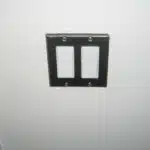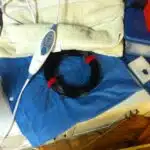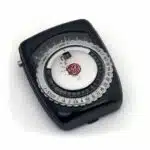As a licensed electrician, I have encountered many homeowners who want to install an electric range in their kitchen. However, the process of wiring a 120/240-volt outlet for an electric range can be daunting, especially for those without electrical experience. In this article, I will guide you through the steps necessary to wire a 120/240-volt outlet for an electric range safely and efficiently.
Before we begin, it is imperative to emphasize that electrical work should only be performed by licensed professionals. Attempting to wire a 120/240-volt outlet without proper training and knowledge can result in electrical shock or fire hazards. Therefore, it is crucial to consult with a licensed electrician before undertaking any electrical project. With that being said, let’s dive into the steps required to wire a 120/240-volt outlet for an electric range.
Understanding Electrical Safety Precautions
Electrical hazards are a serious concern when working with any electrical appliance. Electric ranges are no exception, as they operate on high voltage and require specialized wiring to function properly. It is essential to understand the electrical safety precautions before attempting to wire a 120/240-volt outlet for an electric range.
Safety regulations dictate that all electrical work must be performed by a licensed electrician. This ensures that the work is done correctly and safely, following all necessary codes and regulations. Attempting to do electrical work without proper training and licensing can result in serious injury or even death.
It is crucial to take precautions when handling electricity, such as wearing personal protective equipment like gloves and goggles. Additionally, it is important to ensure that power sources are turned off before beginning any work on electrical appliances or outlets. Failure to follow these guidelines can lead to electrocution, which can be fatal or cause severe injury.
To wire a 120/240-volt outlet for an electric range safely, it is imperative to follow all safety protocols and regulations set forth by licensed professionals. Electrical hazards pose a significant risk when not handled appropriately, so proper training and licensing are crucial in preventing accidents. In the subsequent section, we will discuss identifying the correct circuit requirements for your electric range.
Identifying The Correct Circuit Requirements For Your Electric Range
Before attempting to wire a 120/240-volt outlet for an electric range, it is important to take the necessary safety precautions. This includes shutting off the power supply to the circuit and ensuring that all tools and materials are in good condition. Additionally, it is crucial to understand the basic principles of electricity and how it operates within a household setting.
The next step in wiring a 120/240-volt outlet for an electric range involves identifying the correct circuit requirements for your specific appliance. This will involve determining the power requirements of your electric range, which can be found in the manufacturer’s specifications or on the appliance itself. Once you have this information, you will need to select an appropriate wire size that can handle the electrical load of your appliance without overheating or causing damage to your home’s electrical system.
In order to successfully wire a 120/240-volt outlet for an electric range, it is essential to gather all necessary tools and materials beforehand. This will typically include wire cutters, pliers, electrical tape, wire nuts, and a voltage tester. It may also be helpful to have a wiring diagram or instructional guide on hand in order to ensure that you are following proper procedures and avoiding any potential hazards. With these tools and materials at your disposal, you can proceed with confidence knowing that you have taken all necessary steps to ensure a safe and effective installation process.
Gathering The Necessary Tools And Materials
As an electrician, imagine yourself as a chef preparing a dish. You cannot start cooking without the necessary ingredients and tools. Similarly, you cannot start wiring an electric range outlet without the appropriate tools and materials. To ensure a successful installation, select appropriate wire gauge and grounding for your outlet.
Firstly, for the wire gauge selection, consider the electrical load of your range to determine the appropriate size wire. The National Electrical Code (NEC) recommends that 8-gauge copper wire is suitable for ranges with 40-amp circuits while 6-gauge copper wire is best for those with 50-amp circuits. Remember to avoid using aluminum wires as they can lead to potential hazards such as corrosion and overheating.
Secondly, grounding your outlet is crucial for safety reasons. Grounding provides a safe pathway for electricity in case of circuit abnormalities or faults. It also helps prevent electric shocks by redirecting current flow through the ground instead of human bodies. Make sure to use a three-pronged receptacle and connect it to a grounding conductor that runs back to the main panel.
In summary, selecting appropriate wire gauge and proper grounding are essential steps in wiring an electric range outlet safely and correctly. Now that you have gathered all necessary tools and materials let’s move on to ensuring safety measures are in place before proceeding with installation – turning off the power supply to the circuit will be our next step.
Turning Off The Power Supply To The Circuit
In order to safely shut off the main power supply to the circuit, the main circuit breaker should be located and switched to the off position.
For safety reasons, all other breakers should be turned off prior to this step.
To locate the main circuit breaker, the electrical panel should be identified and the appropriate switches should be located.
After the main circuit breaker is turned off, the 120/240-volt outlet for an electric range should be wired according to the manufacturer’s instructions.
Shutting Off The Main Power
As a licensed electrician, it is crucial to follow the necessary steps for safe disconnection of the power supply before wiring a 120/240-volt outlet for an electric range. The first step is shutting off the main power to prevent any risk of electrocution. This involves locating the service panel and turning off the circuit breaker that controls the power supply to the specific area where you will be working.
After shutting off the main power, it is essential to label all electrical wires correctly. This ensures that they are reconnected accurately during installation. Labeling also helps identify which wires belong to which circuits, making it easier to troubleshoot in case of any electrical problems. It is highly recommended to follow local electrical codes and regulations during this process.
Before connecting your new 120/240-volt outlet for your electric range, ensure that you have followed all safety protocols and guidelines related to disconnecting and reconnecting electrical wires. Always prioritize safety when dealing with electricity as it can be dangerous if not handled correctly. Remember to double-check everything before turning on the main power again.
Locating The Circuit Breaker
To ensure safety when wiring a 120/240-volt outlet for an electric range, it is vital to disconnect the power supply before starting any work. One of the initial steps in this process is locating the circuit breaker that controls the power supply to the specific area where you will be working. As a licensed electrician, it is essential to know the location of the circuit breaker and follow all safety precautions when working with electricity.
Locating the circuit breaker can be done by identifying the electrical panel or box that houses it. This panel typically has a cover that needs to be removed carefully, revealing rows of switches or fuses. Each switch or fuse corresponds to a particular area or appliance in your home, making it easier to identify which one controls the power supply to your electric range. It is crucial to turn off only the circuit breaker that supplies power to your electric range and not any other ones.
While locating and turning off the circuit breaker may seem like a straightforward task, it is crucial to follow all safety protocols and guidelines during this process. Always prioritize safety over convenience when dealing with electricity as it can be dangerous if not handled correctly. Remembering these simple yet crucial steps will help ensure that you stay safe while wiring your 120/240-volt outlet for your electric range.
Removing The Old Outlet
The first step in replacing an electric range outlet is to remove the old one. To do this, turn off the power supply to the outlet by flipping the circuit breaker or removing the fuse that controls it. Double-check with a voltage tester to be sure there is no electricity flowing through the wires. Once you have verified that it is safe to proceed, unscrew and remove the cover plate from the outlet box.
Next, disconnect the wires from the old outlet. The black and red wires are hot, while the white wire is neutral and the green or bare copper wire is ground. You may need to use a screwdriver or pliers to loosen and remove screws that hold each wire in place. Be careful not to touch any of these wires while they are still connected to live electrical current.
After you have disconnected all of the wires from the old outlet, dispose of it properly according to local regulations for electronic waste disposal. Do not simply throw it in with regular household trash or recycling. Once you have removed all of the old materials and ensured that there are no stray wires still connected to electrical current, you can move on to preparing for installation of your new 120/240-volt electric range outlet.
Preparing The Wires For The New Outlet
To prepare the wires for the new outlet, you will need to strip the insulation off the ends of each wire. Start by using a wire stripping tool to remove about 1 inch of insulation from each end of the wires. Be careful not to damage any of the strands inside the wire while stripping it. Once stripped, use your fingers or needle-nose pliers to gently twist the strands together, making sure they are tightly wound.
Grounding requirements must also be considered when preparing the wires for a new outlet. In order to ground an electric range, you will need to connect a grounding wire from the circuit breaker box to the outlet. This grounding wire provides a safe path for electrical current in case of a fault or short circuit. Make sure that all connections are tight and secure before moving on to connecting the wires to the outlet.
Proper wiring techniques are essential for ensuring that your electric range functions safely and efficiently. Follow these guidelines carefully and take your time during installation. By taking these steps, you can ensure that your electric range is properly wired and grounded, reducing your risk of electrical shock or fire hazard. Next, we will move on to connecting the wires to the outlet itself for proper operation of your electric range.
Connecting The Wires To The Outlet
After preparing the wires for the new outlet, it’s time to connect them to the outlet. The first step is to strip the wires using wire stripping techniques. This means removing about ¾ inch of insulation from each wire using a wire stripper tool or a utility knife. Be careful not to nick or cut the copper wires inside.
Once the wires are stripped, it’s important to ground them properly according to code requirements. To do this, attach a green grounding screw to the metal box if it’s not already present. Then, wrap the bare copper wire around the screw and tighten it securely with a screwdriver. Next, attach another green grounding screw to the green grounding conductor on the range cord and connect it to the metal frame of the range.
Properly installing an electric range outlet requires careful attention to detail and following code requirements. With proper wire stripping and grounding techniques, you can ensure that your outlet is safe and reliable for years of use. In our next section, we will cover how to install the outlet into the box so that everything is secure and properly connected.
Installing The Outlet Into The Box
- The first step in the installation process is to securely mount the outlet into the box.
- Once the outlet has been properly mounted, the wires need to be connected to the outlet according to the manufacturer’s instructions.
- The wiring of the outlet should be checked for proper polarity and for any loose connections.
- The circuit should be tested for proper voltage and amperage before the outlet is considered ready for use.
Mounting The Outlet
To ensure the safe and efficient installation of a 120/240-volt outlet for an electric range, proper mounting techniques must be employed. Mounting the outlet can be accomplished in a variety of ways depending on the specific needs of the installation. The positioning of the outlet within the box is also critical to ensure that it is accessible and does not interfere with other components.
One common technique for mounting an outlet is to use screws or bolts to secure it to a bracket or frame within the box. This method provides stability and prevents the outlet from moving or becoming dislodged during use. Another approach is to use adhesive strips or bonding agents to attach the outlet directly to the surface of the box. This technique may be preferred in situations where space is limited or where drilling holes for screws or bolts is not possible.
Regardless of the mounting technique selected, it is important to position the outlet correctly within the box. The outlet should be located so that it sits flush with the surface of the box and does not protrude beyond its edges. It should also be positioned so that it is easily accessible for plugging in and unplugging appliances. By taking these steps, a licensed electrician can install a 120/240-volt outlet that will provide reliable service while minimizing safety risks.
Wiring The Outlet
After properly mounting the outlet into the box, the next step in installing a 120/240-volt outlet for an electric range is wiring it. Wiring techniques may vary depending on the specific outlet configuration and electrical system requirements. It is important to follow local building codes and safety guidelines when wiring the outlet to ensure that it is installed correctly and safely.
One common wiring technique involves connecting the black (hot) wire to one of the brass screws on the outlet and the white (neutral) wire to one of the silver screws. The green or bare copper wire should be connected to the grounding screw on the outlet. This ensures that any electrical current flowing through the wires will be grounded and reduce potential hazards.
Another wiring technique involves using a four-wire configuration, which includes two hot wires, a neutral wire, and a ground wire. This type of configuration is required by some newer electrical codes and regulations. In this case, each hot wire connects to its own brass screw on the outlet, while both neutral wires are connected to a single silver screw. The grounding wire should be connected to the grounding screw on the outlet as well. By following proper wiring techniques and selecting appropriate outlet configurations, an electrician can install a safe and reliable 120/240-volt outlet for an electric range.
Testing The Outlet With A Voltage Tester
Before plugging in your electric range, it is crucial to test the outlet with a voltage tester. This tool will determine whether the outlet is delivering the appropriate amount of electricity, which is essential for your safety and that of your appliances. When testing an outlet, you must always prioritize safety and follow precautions to avoid electrocution or injury.
To begin, ensure that the voltage tester you are using is rated for 120/240 volts, which matches the electrical system of your range. Before inserting the probes into the outlet, turn off power at the circuit breaker to prevent any electrical mishaps. Insert one probe into each slot of the outlet- one prong should be inserted into the smaller slot while another goes to the larger one. If no light or sound comes on while performing this test, there may be an issue with your outlet’s wiring or connection.
If you find any problems during testing, troubleshooting outlet issues should never be done alone unless you are a licensed electrician. You can start by checking if any wires have come loose or if there’s any visible damage to them. If this doesn’t fix anything, it’s best to call a professional as they are well-equipped to handle complex electrical issues safely and efficiently. Remember that voltage tester safety measures should always be practiced when handling outlets as they can pose serious hazards even when not in use.
• Always use a voltage tester before plugging in appliances. • Test both slots of the outlet with a probe. • Troubleshoot only if you’re a licensed electrician; otherwise, seek professional help.
With proper voltage tester safety measures observed and potential issues addressed accordingly, it’s time to move on to securing the outlet in place.
Securing The Outlet In Place
After ensuring that the wiring is properly installed, the next step is to secure the outlet in place. As a licensed electrician, it is important to use securing techniques that will ensure that the outlet does not come loose or move after installation. One of the most common installation methods involves using screws to attach the outlet box to a wall stud.
Before installing the outlet box, it is crucial to measure and mark where it should be placed on the wall. This will ensure that it is at the appropriate height and location for easy access. Once marked, a hole can be cut into the wall for the outlet box. The box should fit snugly into this hole with no gaps around its edges.
After inserting the outlet box into its designated spot, it can be secured in place using screws. These screws should be long enough to penetrate through both the box and any drywall or other materials covering it and directly into a wall stud. This will provide maximum stability and ensure that there is no risk of electrical shock due to an improperly installed outlet. With these crucial steps followed, you can proceed with confidence to connecting your electric range to your newly installed 120/240-volt outlet.
Transition: Now that we have secured our outlet in place using proper securing techniques and installation methods, we can proceed with connecting our electric range without any worries or concerns about safety or stability.
Connecting The Electric Range To The Outlet
Before connecting the electric range to the outlet, it is important to note that safety must be a top priority. According to the National Fire Protection Association, electrical malfunctions are the leading cause of house fires in the United States. Therefore, it is crucial to ensure that all connections are made properly and that there are no loose wires or exposed conductors.
One aspect of connecting safely is ensuring proper grounding. Grounding provides a path for electricity to flow safely away from appliances and into the ground. Without proper grounding, a fault in an appliance can result in an electrical shock, causing serious injury or even death. To ensure proper grounding, it is recommended to install a four-wire circuit for electric ranges. This includes two hot wires, one neutral wire, and one ground wire.
To connect the electric range to the outlet, start by turning off power at the circuit breaker. Then, remove the outlet cover and attach each wire to its corresponding terminal on the outlet using wire nuts or screw terminals. After making all connections, carefully tuck any excess wiring into the box and secure the outlet with screws. Finally, turn on power at the circuit breaker and test your connection for proper functioning before using your electric range.
Transitioning into testing your electric range for proper functioning: Now that you have safely connected your electric range to its outlet with proper grounding techniques in place, it’s time to make sure everything is working as intended.
Testing The Electric Range For Proper Functioning
After wiring a 120/240-volt outlet for an electric range, testing the range for proper functioning is crucial. Before plugging in the range, ensure that all connections are tight and secure. Then, turn on the circuit breaker to supply power to the outlet.
Once the range is plugged in and turned on, there are common issues that may arise. One issue is that the burners or oven may not heat up properly or at all. This could be due to a faulty heating element or temperature sensor. Troubleshooting tips include checking these components for any damage or signs of wear and tear. Another issue could be with the control panel not responding correctly. In this case, check if any buttons are stuck or if there is any damage to the panel itself.
Additionally, it’s important to ensure that there are no electrical hazards present during testing. Always use caution when working around electricity and never touch any exposed wires while power is supplied to the outlet. If you encounter any issues that you cannot resolve on your own, do not hesitate to contact a licensed electrician for assistance.
- Test all burners and oven functions thoroughly before using them for cooking.
- Keep an eye out for any strange smells, smoke or sparks emitting from the range.
- Regularly clean your range and inspect it for any signs of damage or wear and tear.
- Have your electric range professionally serviced every year to prevent potential safety hazards.
With proper testing and maintenance, your electric range should function safely and efficiently for years to come. Next step involves securing and covering the outlet box while ensuring compliance with local building codes and regulations.
Securing And Covering The Outlet Box
Now that the outlet box has been properly wired, the next step is to secure and cover it. There are several different securing methods available depending on the type of outlet box used. The most common way to secure an outlet box is to use screws that attach the box to a stud or other structural component of the wall. Another option is to use toggle bolts which can be inserted into drywall or plaster walls where there is no structural support present.
Once the outlet box is securely in place, it’s time to consider covering options. The type of cover used will depend on whether this outlet will be located behind the range or exposed in a more visible location. For outlets behind the range, a standard metal cover plate with a hole for the plug may be sufficient. However, if this outlet will be exposed in an area where it may be seen by guests or visitors, a decorative cover plate may be preferred.
Whatever covering option you choose, it’s important to ensure that it is properly installed and securely fastened to the outlet box. This will help prevent any accidental exposure of live electrical components and ensure that your electric range operates safely and reliably for years to come. With your outlet securely mounted and covered, we can now move on to restoring power to the circuit in order to test our installation work.
Restoring Power To The Circuit
Now that you have successfully wired a 120/240-volt outlet for your electric range, it’s time to restore power to the circuit. Firstly, turn on the main circuit breaker and then switch on the double-pole breaker that you previously installed. This will provide power to your electric range.
If your electric range still does not receive power after restoring it, don’t panic. There are some troubleshooting tips you can try before calling an electrician. Check if there are any loose connections in the wiring or if any wires have become dislodged during installation. Additionally, ensure that all breakers are properly turned on and that the outlet is compatible with your electric range’s voltage requirements.
Common mistakes when installing a 120/240-volt outlet for an electric range include improperly connecting wires or using an incompatible outlet. It’s essential to follow manufacturer instructions and use appropriate tools when installing electrical equipment. If you encounter any difficulties or uncertainties during installation, do not hesitate to seek advice from a licensed electrician.
Next up is final safety checks and tips for maintaining your electric range. Make sure to stay tuned for valuable information on how to keep your appliance running smoothly and safely for years to come!
Final Safety Checks And Tips For Maintaining Your Electric Range
As a licensed electrician, it is my responsibility to ensure that your electric range is not only installed correctly but also maintained properly. While the initial installation is essential, regular maintenance and cleaning are equally important to keep your appliance functioning optimally for years to come.
Regular maintenance includes cleaning the range’s burners, control knobs, and oven interior at least once a month. This helps prevent grease buildup, which can cause fires and affect the range’s performance. Additionally, inspecting the power cord and outlet for any signs of wear or damage should be done periodically. If any issues are detected during these checks, contact a professional immediately to avoid further damage.
Troubleshooting common issues is an essential skill for anyone who owns an electric range. One common problem that people experience is uneven heat distribution in the oven. This can be caused by a faulty heating element or improper placement of the racks. Another issue that arises with electric ranges is when the burners fail to heat up or take too long to do so. In this case, check if there are any food particles blocking the burner ports or if there’s any damage to the coils.
Remember that proper maintenance and troubleshooting can go a long way in extending your electric range’s lifespan while keeping you safe from harm caused by electrical fires. By following these simple tips and performing regular checks on your appliance, you’ll ensure its optimal performance while avoiding costly repairs down the line.
Conclusion
In conclusion, wiring a 120/240-volt outlet for an electric range requires careful attention to detail and adherence to established safety protocols. As licensed electricians, we understand the importance of taking all necessary precautions to protect both ourselves and our clients from potential hazards. By identifying the correct circuit requirements, gathering the necessary tools and materials, and properly installing and securing the outlet box, we can ensure that the electric range functions safely and efficiently.
As we complete our work, we take pride in knowing that our expertise has contributed to a functional and reliable appliance that will provide years of service to our clients. With regular maintenance and proper usage, this electric range will continue to be a valuable asset in any home or kitchen. We urge homeowners to always prioritize electrical safety when working with their appliances, and to seek professional assistance whenever necessary.
Image Credits
- “Live Better Electrically Medallion” by mrbill (featured)

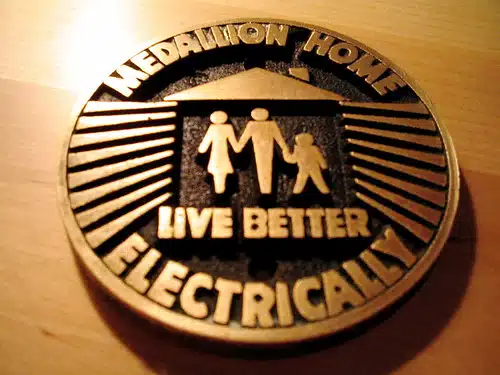
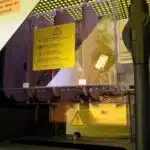
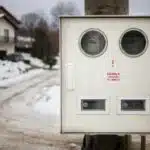





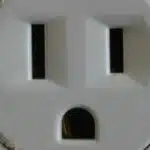


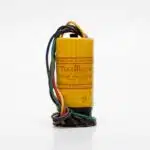








![How To Replace A Single-Pole Wall Switch 21 '... All in all it's just another [switch] in the wall.' ...](https://green-life.blog/wp-content/uploads/2023/05/17xmP5qMtVjq-150x150.jpg.webp)





